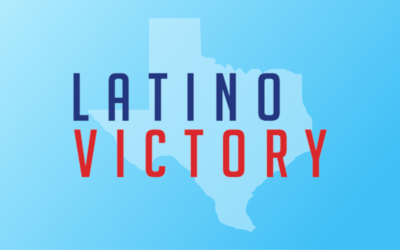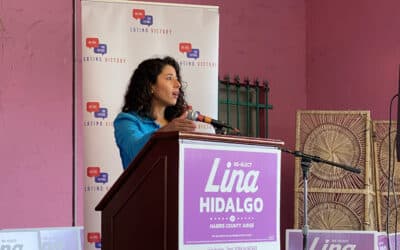As a record-setting alternative energy venture is set to be built in the city of Houston, a number of questions remain about the nature and implementation of the final project.
As previously reported by the Houston Chronicle, the city has approved a lease agreement with Sunnyside Energy to build, in part, the nation’s largest urban solar farm. The project will be erected on a landfill, in the Sunnyside region of the city, that has been out of commission for 50 years. Estimates suggest power can be provided for 5,200 houses, annually offset 120 million pounds of CO2, and cost 70 million dollars.
New reporting from the Texas Signal, however, has identified a number of matters that have yet to be fully worked out. Chief among them involve financing and profit. Currently, Sunnyside Energy is owned by both BQ Energy and Wolfe Energy, who are co-developing the solar farm. According to Dori Wolfe, Wolfe Energy’s sole member, “BQ Energy brings development funds, and I [Wolfe Energy] do the community engagement aspect. That’s the generic breakdown [of responsibilities.]”
Neither entity, however, is providing the aforementioned 70 million dollars needed to create the solar farm. Wolfe explained that cost “will be financed by a party yet to be determined.” When the nuts and bolts of development are further solidified, Sunnyside Energy will court offers for those interested in providing the necessary capital. According to Lara Cottingham, the City of Houston’s Chief Sustainability Officer, “Once you print this [article], they [Sunnyside Energy] will have hundreds of people calling them saying, ‘Oh, I want to be involved in this part or this part or this part.’”
Also unclear at this point is what those who provide the 70 million dollars will receive in return. While Wolfe makes clear that “whoever invests in this [solar farm] will own the project and own the proceeds,” the percentage of said proceeds, and the liquidity of given contributions, have not yet been nailed down. According to Cottingham, those working on the project have to deal with permitting, interconnection, and “finding an offtaker for the power,” prior to dealing with issues of financing. “And so, it’s too soon to say right now what [return on investment] will look like,” she continued. “There’s some companies that might just financially want to invest. There’s other companies that might actually want to physically buy the property and operate it themselves…Others might want to do just pieces of it.” Cottingham added that Sunnyside Energy will be working on this matter over the next few months, and that the project will be cost-neutral for the city of Houston.
Another issue that has not been fully ironed out is how the area’s poorer residents will receive marked down energy prices. A January 14, 2021 press release from the office of Houston Mayor Sylvester Turner proclaimed that the Sunnyside Solar Project will “provide power discounts for low-income residents in the neighborhood.” Dori Wolfe clarified, however, that the nation’s largest urban solar farm will not provide discounted energy. Rather it will come from the Community-Owned Solar Program, which is both part of the Solar Project and is located on the same 240 acre plot as the farm. Per Wolfe and Cottingham, the Community-Owned Program, which is projected to power 200 homes and cost an additional 5 million dollars, will require both a “retail provider” and “subscriber-owners” willing to cover that cost. Undetermined at this point, however, is who that retail provider will be, how said provider will collect the 5 million dollars from subscriber-owners—though Wolfe outlined ways this has happened before —and the discount that the provider will offer to residents. Cottingham explained that because of Texas’ deregulated electricity market, the “retail provider” has to decide to provide a discount, craft eligibility requirements, and determine the extent of the price cut. Nevertheless, she added that the “intent of the [Community-Owned Solar Program] is for a partner to come forward who would be willing to give a discount.”
Something that had previously been up in the air, but seems somewhat firmer now, is the number of homes that the Solar Project will power. An August 29, 2019 press release from the city of Houston says that “the preliminary design [for the Solar Project] would generate enough energy to supply about 12,000 homes.” An October 28, 2020 presentation made to Houston’s Quality of Life Committee, however, estimated that it could power 5,200 homes. A December 2020 action plan from Houston’s Planning and Development Department returned to the 12,000 figure. Mayor Turner’s January 14, 2021 press release, however, once again said that the solar farm could offer energy to 5,000 homes. (That figure did not account for the estimated 200 homes that the Community-Owned Solar Program can power.) In explaining the discrepancy, Wolfe noted that different homes require different amounts of energy, that “there’s…a range when you look at those [types of projections],” and that the size of the Solar Project has shrunk over time. She advises currently relying on the 5,200 figure “I think the Action Plan,” said Wolfe, “appears to be referring to the original data, when we thought we could put a whole lot more on there.”
More concrete at the moment appears to be the plan to mentor local residents in the field of solar energy. The December 2020 action plan released by Houston’s Planning and Development Department cites a “youth job training component” that will be included as part of the Solar Project. Sunnyside Energy, according to Wolfe, is partnering with the Houston Renewable Energy Group, and South Union Community Development Corporation, in order to offer a 10 week, introductory class where students will “have a hands on opportunity to build, touch, [and] learn about building solar.” Ideally, the class would prompt students to take further courses at places like Houston Community College and Texas Southern University, which offer a more extensive solar training program. It will also, said Wolfe, make it easier to meet the request for proposal requirement that the Solar Project be comprised of at least 10% local labor. Potential workers will be taught in-house. This training program, explains Wolfe, is part of “making this [Solar] Project good for the community.”
Training opportunities are not the only way in which those associated with the Solar Project have engaged Sunnyside residents. As part of a larger statement, Daniel Cohan, an associate professor at Rice University, and solar power expert, explained that Wolfe “mentored a team from my [Cohan’s] class at Rice to meet with neighborhood residents and design ways for the [Solar] Project to benefit the community.” That outreach, Cohan said, showed “a commitment to a community that was burdened by the waste site for so long.” He expressed emphatic support for the farm as a whole, referring to it as a “terrific project.”
According to the October 28 presentation, the Solar Project is predicted to begin commercial operation in December of 2022. Between now and then, a number of details have to be finalized—a fact which is not lost on those involved with the effort. “We’ve come a long ways,” said Cottingham. “It’s still a long ways to go.”
Photo: Dennis Schroeder – NREL Photographer / Wikimedia Commons



